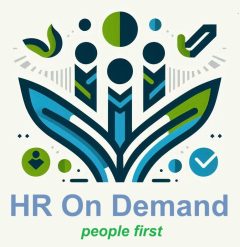Productivity
Productivity in HR: Maximizing Efficiency Without Sacrificing Balance
Productivity is a cornerstone of success for small and medium-sized businesses. For HR, this means fostering a work environment where employees can excel without experiencing burnout. Effective productivity management requires balancing the right tools, processes, and support systems. This overview highlights common challenges, actionable strategies, and the role HR plays in driving productivity.

1. The HR Perspective on Productivity
HR professionals are uniquely positioned to influence productivity by designing policies, fostering a positive culture, and providing resources.
Key Focus Areas: | Aspect | HR’s Role | |—————————|——————————————————————–| | Workplace Environment | Creating a space (physical or virtual) that supports focus. | | Employee Engagement | Motivating employees to take ownership of their tasks. | | Tools and Technology | Providing tools that streamline workflows and reduce inefficiencies. |
SEO Keyword Phrase: “HR productivity strategies for small businesses”
2. Common Productivity Challenges
Productivity pitfalls can arise from various sources, including ineffective processes, lack of engagement, or external stressors.
Major Productivity Roadblocks:
- Unclear Goals: Employees struggle when roles and expectations are vague.
- Poor Communication: Misunderstandings or lack of information hinder teamwork.
- Technology Overload: Too many tools can overwhelm rather than assist employees.
- Burnout: Prolonged stress reduces morale and efficiency.
HR Insights: HR can address these challenges by streamlining communication, offering training, and promoting work-life balance.
3. Strategies to Boost Workplace Productivity
Effective productivity management combines proactive planning with continuous improvement.
Key Strategies:
- Goal Setting with OKRs (Objectives and Key Results):
- Clear objectives align employees with organizational priorities.
- Example: Increase customer satisfaction by 20% in Q2.
- Foster a Feedback Culture:
- Encourage regular check-ins between managers and employees.
- Use feedback to adjust workflows and resolve challenges.
- Support Flexible Work Arrangements:
- Remote and hybrid models can increase productivity for certain roles.
- Offer tools like project management software to maintain accountability.
Productivity Hacks for Teams | Action | Impact | |—————————–|————————————-| | Set daily priorities | Helps employees focus on what matters most. | | Use time-blocking techniques| Reduces distractions and maximizes focus time. | | Implement task automation | Frees up time for strategic work. |
4. HR Tools to Enhance Productivity
HR technology plays a crucial role in streamlining operations and improving efficiency.
| Category | Example Tools |
|---|---|
| Task Management | Trello, Monday.com |
| Employee Well-Being | Headspace, Calm |
| Analytics & Reporting | Zoho People, BambooHR |
5. The Role of Workplace Culture in Productivity
Culture is a powerful driver of productivity. A positive culture fosters motivation, accountability, and collaboration.
Cultural Drivers of Productivity: | Cultural Element | Impact on Productivity | |——————————|————————————–| | Open Communication | Reduces misunderstandings and delays. | | Employee Recognition Programs| Drives motivation and job satisfaction. |
6. Measuring and Sustaining Productivity
Productivity is a dynamic metric, influenced by both internal and external factors. HR can implement tools and strategies to measure and sustain productivity over time.
Key Metrics:
- Task completion rates.
- Employee satisfaction surveys.
- Turnaround time for deliverables.
Sustainability Tips:
- Continuously seek employee feedback to improve processes.
- Rotate workloads to prevent fatigue.
